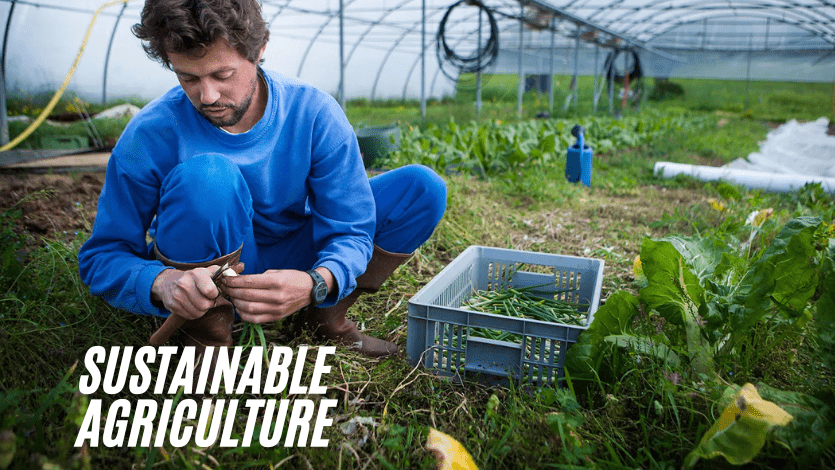
In the heart of every nation lies its agricultural soul—the land and the people who tend to it. For India, confirming this foundation remains robust in the face of climate change and growing demand is a paramount challenge. The National Mission for Sustainable Agriculture (NMSA) is a strategic response to this challenge, representing a conscious evolution from purely production-centric policies to a more holistic, resilient model. It is the embodiment of a nationwide commitment to sustainable agriculture, confirming that our pursuit of food security today does not come at the expense of our environmental security tomorrow.
This mission isn’t just a government scheme; it’s a framework for transformation. Let’s explore its core objectives, the strategies it employs to achieve them, and the progress made on the ground.
The Guiding Star: Core Goals of the Mission
The NMSA was conceived with a clear, forward-thinking vision. Its goals are interconnected, each feeding into the other to create a synergistic effect for long-term sustainability.
- Enhancing Agricultural Productivity Responsibly: The mission aims to increase productivity per unit of land, water, and energy, but with a critical caveat: it must be done without degrading the environment. The goal is “more from less,” moving away from resource-exhaustive practices.
- Building Resilience to Climate Change: A primary focus is to make Indian agriculture adaptive to the vagaries of climate change. This involves equipping farmers and farming systems to withstand shocks like droughts, floods, and unseasonal temperature shifts, thereby stabilizing income and food production.
The Blueprint for Action: Key Strategies Implemented
To translate these ambitious goals into tangible action, the National Mission for Sustainable Agriculture employs a multi-faceted strategy focused on on-ground implementation and farmer empowerment.
- Promoting Location-Specific Technologies: Recognizing that India’s agro-climatic zones are diverse, the NMSA avoids a one-size-fits-all approach. It promotes the adoption of context-specific technologies like:
- Water Use Efficiency: Through micro-irrigation (drip and sprinkler systems), rainwater harvesting, and the development of precision irrigation schedules.Soil Health Management: Primarily through the revolutionary Soil Health Card Scheme, which provides farmers with a customized “health report” for their land, recommending precise nutrient management.
- Integrated Farming Systems (IFS): Encouraging a combination of crops, livestock, fisheries, and agroforestry on a single farm. This diversifies income sources, reduces risk, and creates a self-sustaining ecosystem where waste from one component becomes input for another.
- Knowledge Dissemination and Capacity Building: The mission invests heavily in training farmers. It creates “resource persons” and master trainers within communities to demonstrate the benefits of sustainable agriculture practices, fostering a culture of peer-to-peer learning.
- Financial Support and Incentivization: The government provides subsidies and financial assistance to make sustainable technologies accessible. This includes aid for installing drip irrigation systems, constructing water harvesting structures, and purchasing organic inputs, effectively lowering the initial barrier to adoption for farmers.
- Synergizing with Other Schemes: The NMSA does not operate in a vacuum. It works in concert with other national initiatives like the Paramparagat Krishi Vikas Yojana (PKVY) for organic farming and the National Mission on Micro Irrigation (NMMI), creating a powerful, integrated push for sustainability.
Taking Root: Notable Achievements and Impact
While the journey is ongoing, the National Mission for Sustainable Agriculture has already catalyzed significant change across the Indian agricultural landscape.
- A Greener Footprint: The promotion of practices like Integrated Nutrient Management (INM) and Integrated Pest Management (IPM) has led to a noticeable reduction in the indiscriminate use of chemical fertilizers and pesticides. This has improved local biodiversity, reduced groundwater contamination, and lowered production costs for farmers.
- Building a Movement, Not Just Implementing a Policy: Perhaps the most profound achievement is the gradual shift in mindset it has triggered. A growing number of farmers are now viewing themselves as stewards of the land. They are actively seeking information on sustainability, forming clusters for organic farming, and adopting practices that confirm the long-term health of their holding.
The Road Ahead
Challenges remain, including the need for wider adoption, strengthening market linkages for sustainably produced crops, and continuing to innovate in the face of new climate threats. However, the National Mission for Sustainable Agriculture has undeniably laid a strong foundation.